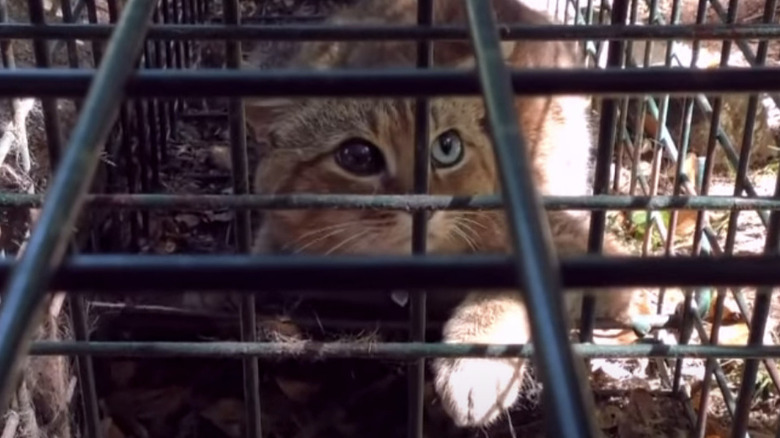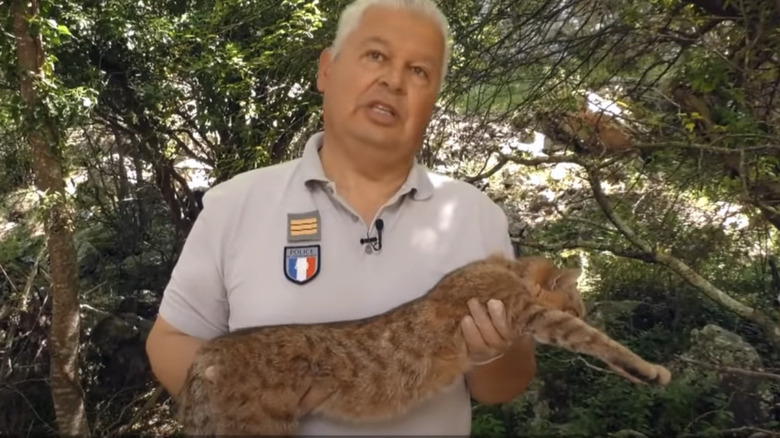The Puzzling Mammal Found In Corsica That Resembles Both A Cat And A Fox
Many nature lovers agree: foxes — a dog species — really do sometimes act more like cats. Both cats and foxes, for example, stalk and hunt their prey, according to The Spruce Pets. Despite that similarity, among others, foxes most definitely belong to the canine family, according to A-Z Animals. But in 2019, on the small French island of Corsica, a whole new kind of mammal was identified that isn't a cat or a fox, but with traits of both.
Though the previously unknown mammal's species is in fact feline, and an estimated 16 examples of the mammal live on the island of Corsica, this animal is otherwise new to science. It's also unlike any other previously known cat species, according to USA Today. Because of its similarity to foxes, in French this new fox-like cat species is called the "chat renard," in Corsican it's name is "ghjattu volpe," and in English it's simply called "fox-cat," based on Forbes reporting.
The fox-cat: new to science, familiar to Corsican farmers
Though the fox-cat (pictured) — which are longer than a typical house cat with a bushy tail like a fox — was only recently identified by science, these nocturnal prowlers have long tormented Corsican farmers. In 2008, a fox-cat, with wide ears, short whiskers, and developed canine teeth, was caught in a chicken coop. The animal's overall size and the shape of its tail are what primarily draw fox comparisons. The plant covering on the island of Corsica helps defend the creature from its only known predator, the golden eagle.
In 2019, Chief Environmental Technician of the French Forest and Hunting Office (ONFCS), Pierre Bendetti, told Metro that the fox-cat had long been a part of Corsican shepherd mythology. "From generation to generation, they told stories of how the forest cats would attack the udders of their ewes and goats," Bendetti said. Resembling a traditional house cat but not all the same species, the coat of the Corsican fox-cat is striped, with a black-tipped tail, and a red-orange colored belly. The fox-cat is likely a species native to Corsica, and since it's nocturnal and otherwise inconspicuous, it had managed to evade scientists for centuries, according to Bendetti.
The fox-cat could be of Middle Eastern origin
As Bendetti went on to note to Metro, the fox-cat could have been brought to Corsica around 6500 B.C. To determine that the fox-cat is its own species, scientists tested the animal's DNA. In doing so, they determined the creature was distinct from both the European and African wildcat, and for this reason, its true origins may reside in the Middle East. According to The Guardian, another cat-fox like animal was photographed in Borneo, but at that point scientists had failed to catch what was then only known as the Borneo cat-dog-fox-monkey-lemur.
On the discovery of a new mammal species, Wildlife Conservation Society researcher Robert Timmins said (via The Guardian) "Skeptics might say that if we are still discovering such amazing new animals then why are people worried about wildlife loss; but, of course, it is an indication of how little we know, and a window on to what we could be losing without ever knowing." As of the 2019 Metro report, scientists hoped to see the Corsican fox-cat species protected.


